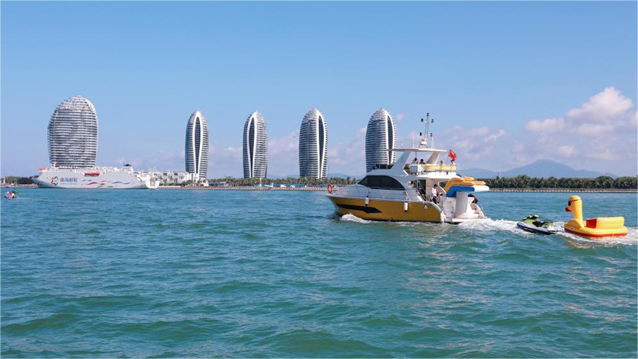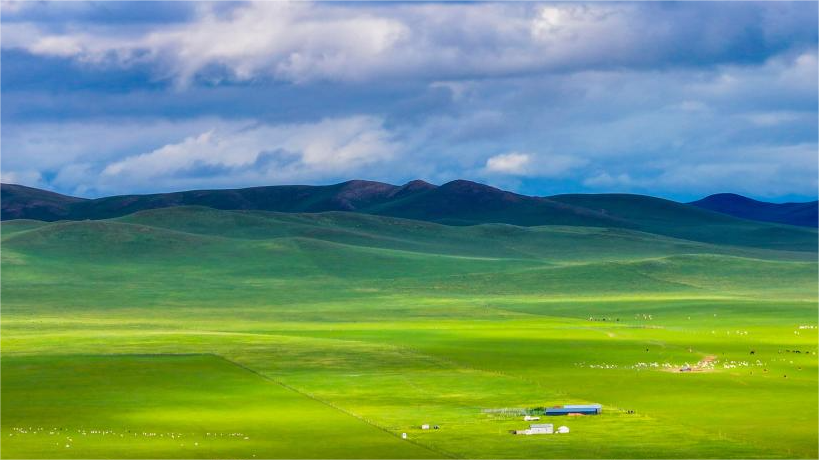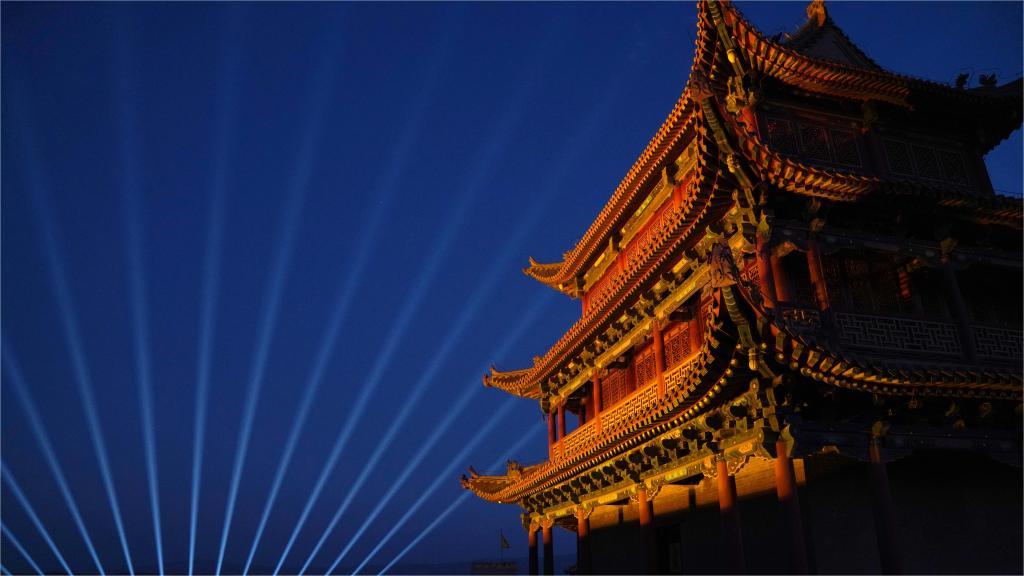Grass industry thrives in N China's Inner Mongolia
In 2023, the total amount of land dedicated to grass seed cultivation in north China's Inner Mongolia Autonomous Region reached 265,000 mu (about 176.67 square kilometers), with an annual grass seed production capacity of over 5 million kilograms.
In the same year, the region cultivated 21.72 million mu of forage grass and the output value of the grass industry chain reached 80.21 billion yuan (about $11.02 billion), ranking first in China in both grass production and output value.

Grass seeds are on display at the seed industry center of Inner Mongolia M-grass Ecology and Environment (Group) Co., Ltd. (People's Daily Online/Miao Yang)
At the seed industry center of Inner Mongolia M-grass Ecology and Environment (Group) Co., Ltd., located in Hohhot, researchers work on registering, screening, and collecting grass seeds.
"We carry out a comprehensive process, including registration, selection, dehydration, testing, packaging, storage, and monitoring of the seeds. Depending on the purpose and duration of preservation, we store the collected germplasm resources in different temperature-controlled facilities," explained Zheng Lina, head of the Germplasm Resources and Testing Center of the company.
The germination rates of the stored seeds are regularly checked every five to 10 years. If any seeds show a decrease in germination rates, they are quickly reproduced and their updated versions are preserved. This scientific method of seed preservation guarantees that the majority of seeds can be stored for decades, hundreds, or even thousands of years.
Currently, the company's resource bank houses 60,000 samples of germplasm resources from 2,200 different plant species, 150,000 seed samples, and 1.5 million soil samples, guaranteeing the availability, suitability, and security of ecological restoration and grass-fed livestock industry in Inner Mongolia.
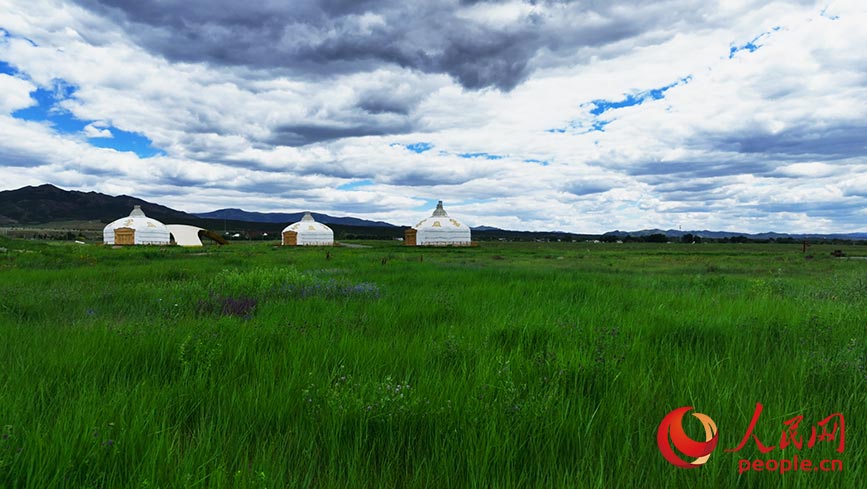
Photo shows the Chilechuan Grassland in north China's Inner Mongolia Autonomous Region. (People's Daily Online/Meng Jiashu)
Grass not only grows on grasslands but also in the “sky”. In the “aerial pasture” of Otog Banner, Ordos city, the air is filled with the fragrance of fresh grass. Rows of neatly arranged grass cultivation trays are placed on automated seedling racks. With the aid of artificial lighting, temperature and humidity sensors, automated sprinklers, and liquid circulation systems, the grass flourishes.
"After seven to eight days of hydroponics, the seeds can sprout into green grass. The production is continuous, ensuring that cattle and sheep have access to fresh grass even during grazing bans and winter," said Hasi Batu, who oversees the grass cultivation facility.
The “aerial pasture” grass cultivation facility effectively solves the issue of out-of-season fresh grass supply in the local area, providing a solution to the challenges faced by local farmers and herders in accessing affordable and timely grass feed.
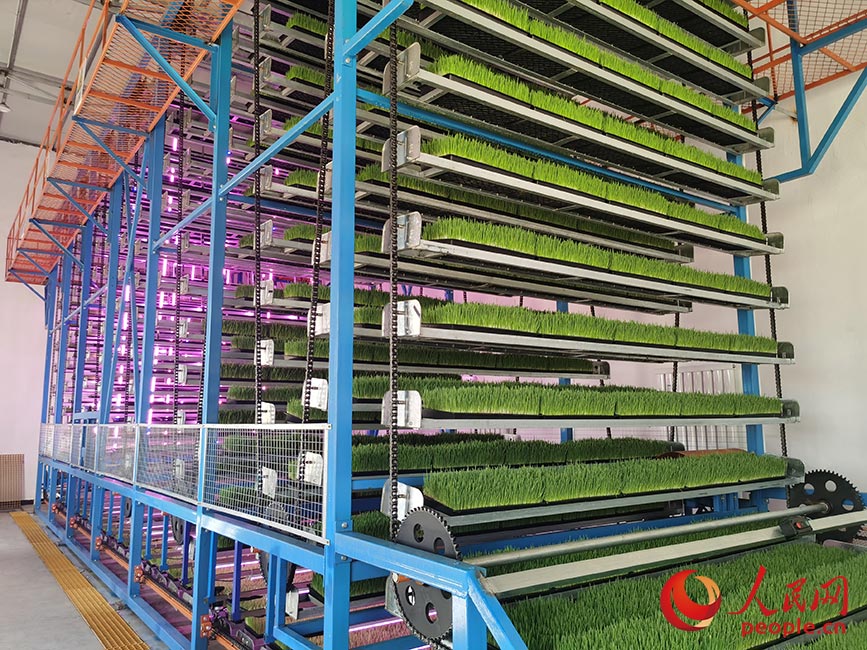
Photo shows automated seedling racks in a grass cultivation facility situated in Otog Banner, Ordos, north China's Inner Mongolia Autonomous Region. (Photo courtesy of the interviewee)
Additionally, it saves costs related to land, feeding, and labor, and promotes the implementation of grassland ecological restoration systems such as grazing bans and grass-based livestock farming.
So far, the grass cultivation technology has been applied in 11 demonstration sites throughout Inner Mongolia. Together, these sites have produced a total of 15,000 tonnes of fresh forage grass.
Animal husbandry is a characteristic and advantageous industry in the Hinggan League of Inner Mongolia. The area has found a solution that helps to preserve the balance between protecting grassland ecosystems and developing animal husbandry.
A grass feed factory in Ali Der'er Modern Grass Industry Processing and Logistics Trading Park, Horqin Right Front Banner of Hinggan League, boasts 52 advanced pieces of machinery. It incorporates cutting-edge technology and patented techniques in its production process, being able to produce 50 tonnes of fully mixed feed per day.
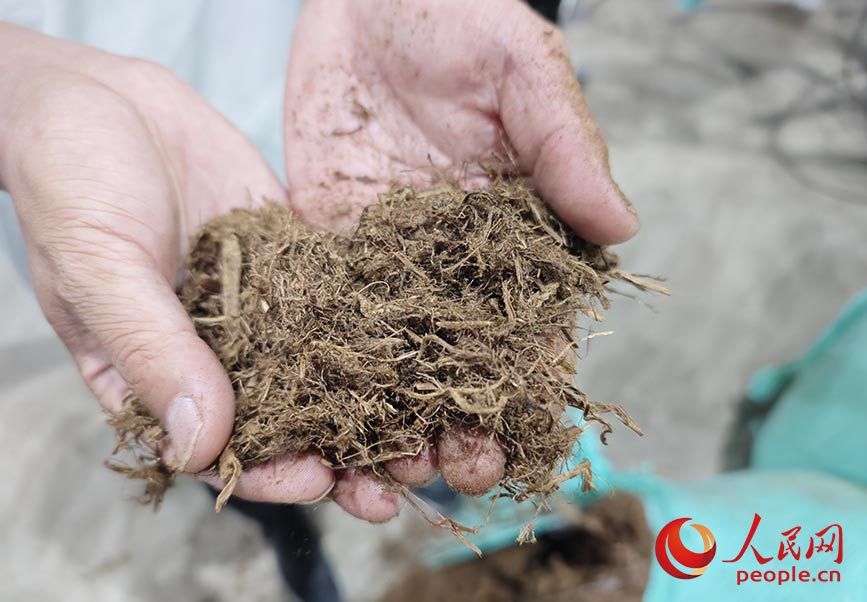
Photo shows grass feed processed at a grass feed factory, located in Ali Der'er Modern Grass Industry Processing and Logistics Trading Park in Horqin Right Front Banner of Hinggan League, north China's Inner Mongolia Autonomous Region. (People's Daily Online/Liu Yilin)
"The grass feed produced here is not only highly palatable but also rich in nutritional value. This exceptional quality ensures that cattle and sheep achieve an absorption rate of over 75 percent," said Ke Xin, head of the factory. Currently the factory's products cater to the needs of approximately 600,000 sheep within a 50-kilometer radius, Ke added.
At the site, ecological products like tableware and kitchen utensils are on display. The products, made from rice husks, show how what was once waste from the grass industry can now be used to create durable and environmentally friendly goods that further extend the industry’s product chain.
Prioritizing ecology and pursuing green development has become a conscious choice among the people of Inner Mongolia. With concerted efforts from all sides, a new chapter is being written on the development of the grass industry, embarking on a path where ecological, social, and economic benefits are unified.
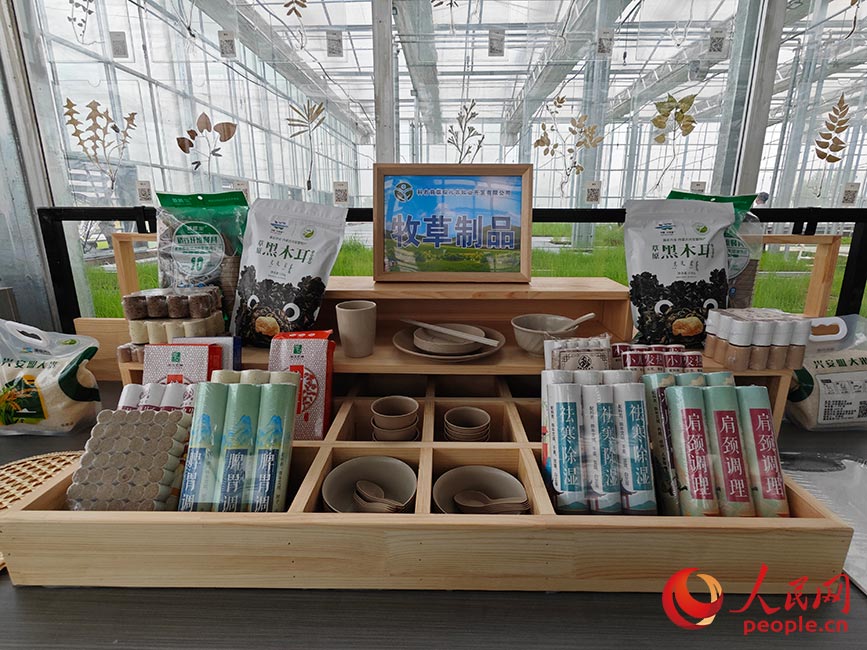
Photo shows green products made from rice husks at a grass feed factory in Ali Der'er Modern Grass Industry Processing and Logistics Trading Park, Horqin Right Front Banner of Hinggan League, north China's Inner Mongolia Autonomous Region. (People's Daily Online/Miao Yang)
Photos
Related Stories
- Scenery of grassland in north China's Inner Mongolia
- Traditional Ewenki handicrafts boost local economy in N China's Inner Mongolia
- 34th Naadam festival kicks off in China's Inner Mongolia
- Scenery of Daqingshan National Nature Reserve in Hohhot, N China
- Inner Mongolia village taps rural cultural industry to paint a brighter future
- Traditional Mongolian ethnic culture promoted at schools in NE China
- Grassland homestay cluster becomes driving force for development of grassland tourism in Inner Mongolia
- View of Daqingshan Nature Reserve in Inner Mongolia
- China's Inner Mongolia sees installed capacity of new energy topping 100 mln kilowatts
- A glimpse of Qisumu int'l railway logistics hub in Ulanqab, China's Inner Mongolia
Copyright © 2024 People's Daily Online. All Rights Reserved.






